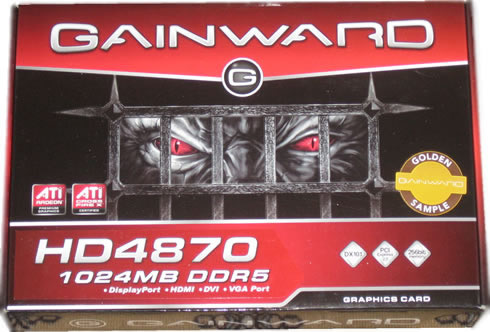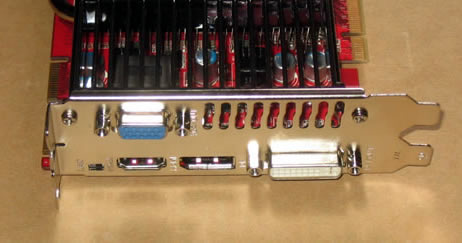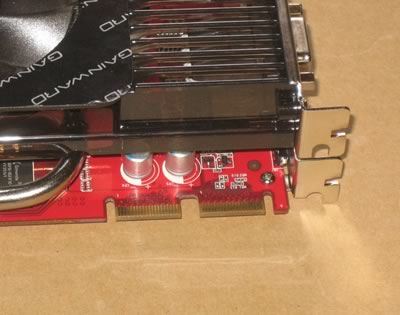1. Features, specifications
We have in our hand today Gainward's high-end implementation of ATI 4870 series of graphics cards. Part of Gainward's "Golden Sample" series of overclocked graphics solutions, the Gainward HD4870 1024MB GS has 1024MB of GDDR5 memory onboard instead of the 512MB ATI/AMD offers in its reference design.
The specifications of the card say that it comes with a dual BIOS support that would allow you to run the card in two over-clocking modes/speeds; "Normal" mode and "Turbo" mode:
- 750MHz core clock, DDR5 950 (DDR 3800) MHz memory clock (Normal Mode).
- 775MHz core clock, DDR5 1000 (DDR 4000) MHz memory clock (Turbo Mode).
Out test sample did not support this dual BIOS feature.
The 256 bits/0.8nsec GDDR5 memory (1GB) onboard is very promising and our first thoughts are how this monster would perform against the Nvidia 260GTX product that features 896MB of memory.
Gainward has also equipped the graphics card with a modified cooling system that is expected to increase the overclocking margins of the card.
We also find very interesting the available DisplayPort and an HDMI (1080p) ports placed on the card, along with the DVI (Dual-link DVI, support up to 2560x1600) and the VGA (D-sub 15) connectors.

- Retail package
The Gainward HD4870 1024MB GS retail package would cost you around ~€230.

The box includes no retail game but a printed manual, a driver's disc, a molex-to-pci-e adapter and a DVI-to-HDMI adapter.

The card is equipped with a cooling large cooling system that has two 80mm fans. The height of the card is enough to occupy two slots at the back of your PC.


As we previously mentioned, at the back side of the card you will find a DSub 15, a DVI-D, an HDMI, and finally a DisplayPort jack.
The card is also ready for ATI CrossFire X configurations.


The HD4870 series requires two 6pin power jacks to work properly. No worries if your power supply does t have such cables; the included adapter will do the job, provided that your power supply is powerful enough to handle the graphics card.

The latest ATI Catalyst Control Center provides information about our sample in test.

The GPU core runs
at 750MHz and the memory is clocked at 950MHz.


By default, the fan speed runs at 29% as long as the GPU temperatures about 53 degrees Celsius . Note that under AMD Overdrive you can also manually set the fan's rotating speed.
